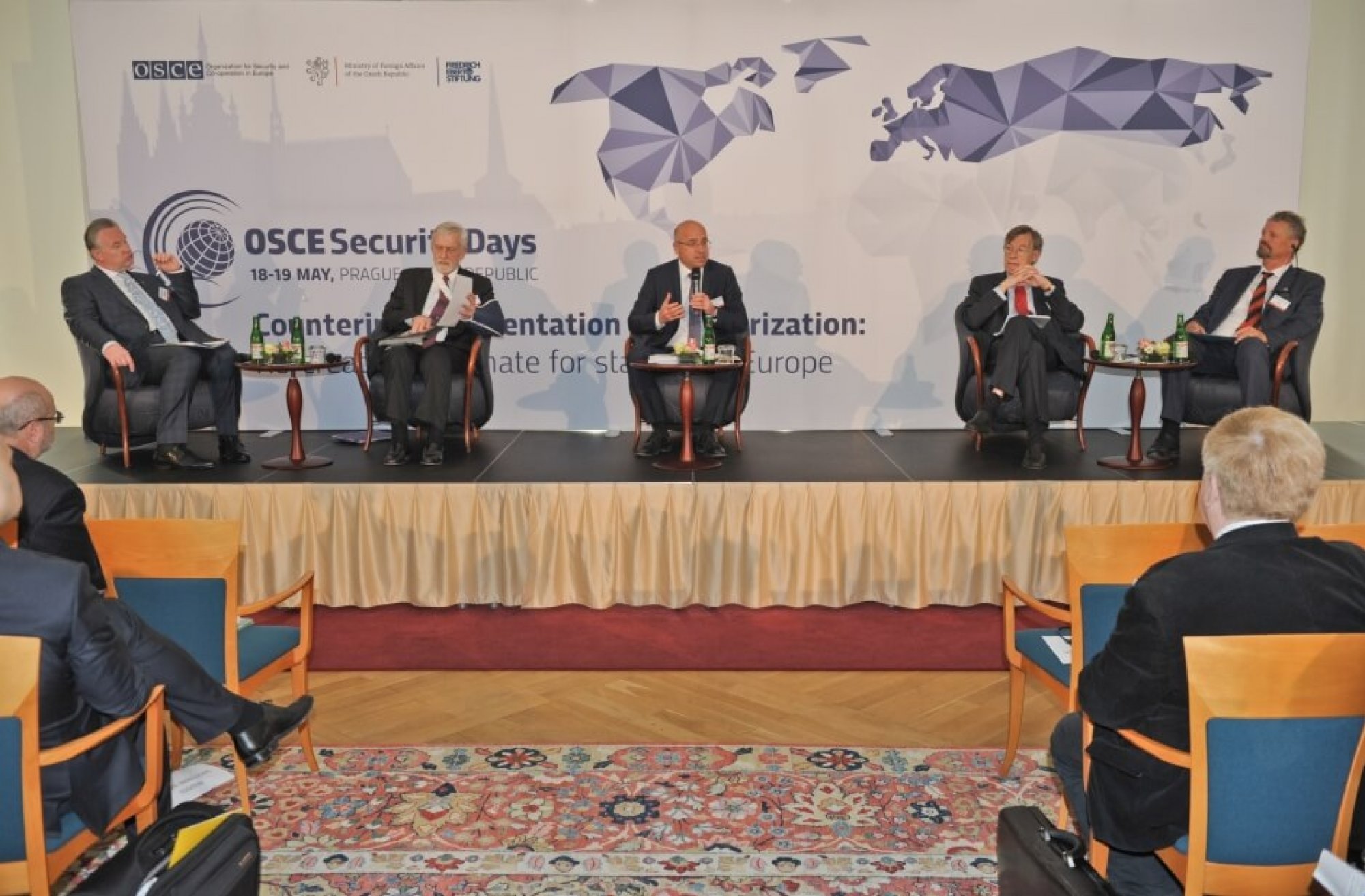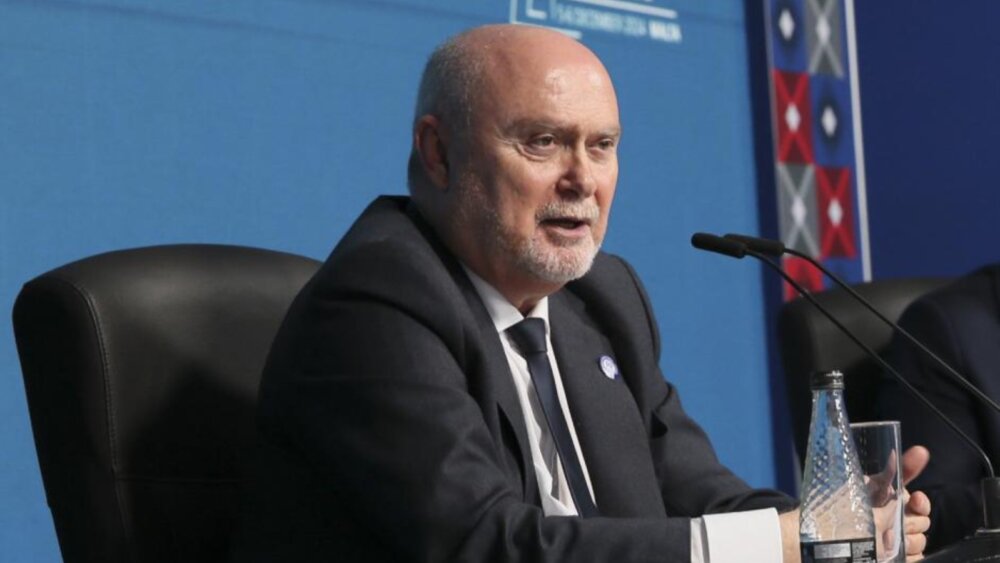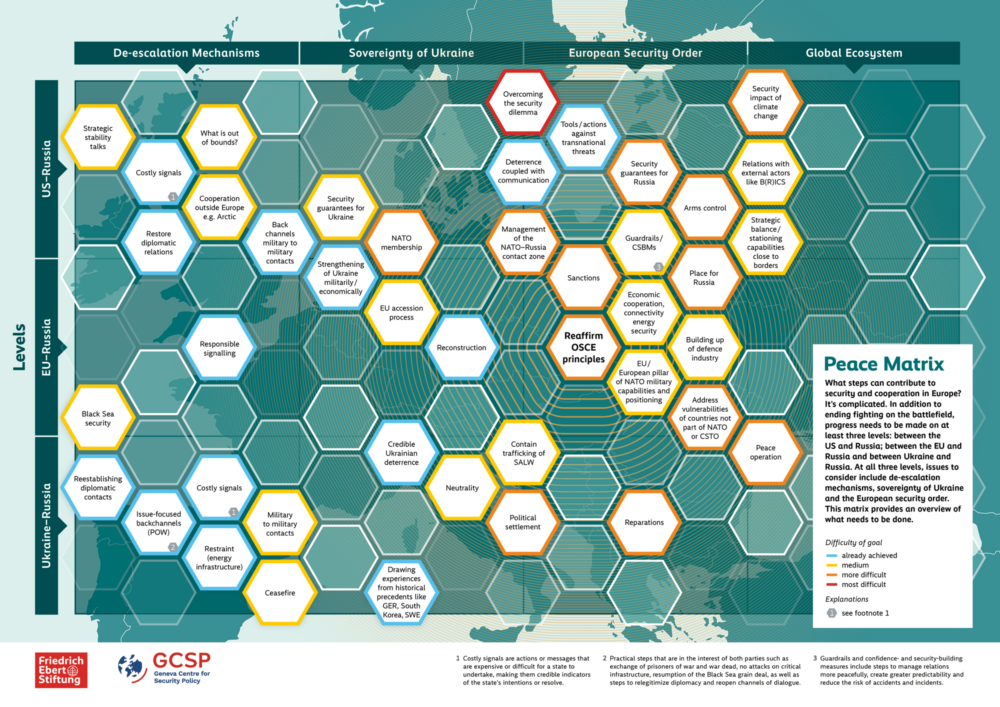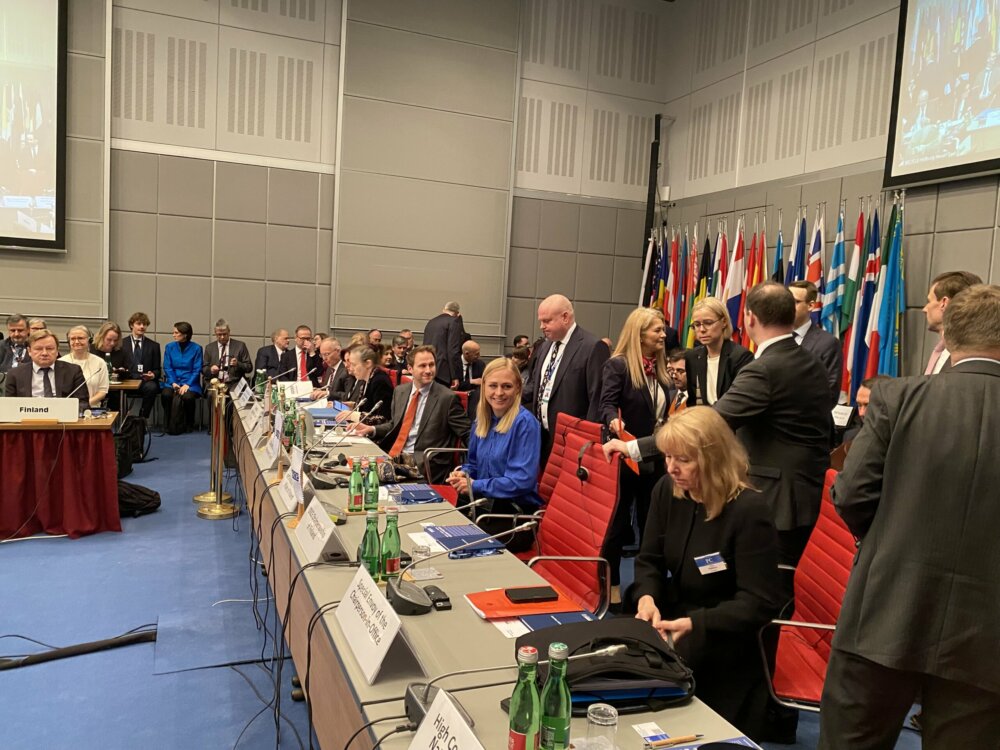OSCE/Lubomir Kotek

Guest article: Five Takeaways from the OSCE (In)Security Days in Prague
The official motto of the OSCE Security Days in Prague on 18-19 May 2017 was “Countering fragmentation and polarization” with the aim of “re-creating a climate for stability in Europe”. The “OSCE Security Days” are OSCE Secretary General Lamberto Zannier’s brainchild. He launched this particular dialogue forum in June 2012 with the aim of bringing together experts from government, think tanks and academic institutions, civil society, youth, and media to engage in an informal and interactive discussion on 21st-century threats and challenges. Here are five takeaways from the conference.
The official motto of the OSCE Security Days in Prague on 18-19 May 2017 was “Countering fragmentation and polarization” with the aim of “re-creating a climate for stability in Europe”. The “OSCE Security Days” are OSCE Secretary General Lamberto Zannier’s brainchild. He launched this particular dialogue forum in June 2012 with the aim of bringing together experts from government, think tanks and academic institutions, civil society, youth, and media to engage in an informal and interactive discussion on 21st-century threats and challenges. Here are five takeaways from the conference. (the conference proceedings are available to watch here):
- OSCE Insecurity Days:As one participant noted, the Prague event should perhaps better have been called “OSCE Insecurity Days”. Indeed, the current security architecture in Europe is marked by instability, fragmentation, and polarization. The OSCE as a consensus-based institution suffers from the renewed East-West tensions and divided security. Since Russia’s military intervention in Ukraine and the annexation of Crimea, asReinhard Krumm(Friedrich Ebert Foundation, Vienna) stated, uncertainty reigns within the OSCE area about mutual intentions. While the West, led by the US, complains that Russia is acting against the spirit of the OSCE, Russia likewise accuses the West of violations of OSCE principles. With different degrees, both sides can provide arguments that support their respective narratives.
- Hamburg – A Success Story:Taking stock about Germany’s 2016 OSCE Chairmanship,Gernot Erler, Germany’s Special Representative for the OSCE, recognized successes like the extension of the mandate of the Special Monitoring Mission to Ukraine, the launching of a structured dialogue on conventional arms control in Europe, and the Ministerial Declarations on migration and economic connectivity – two relatively new, but important topics for the OSCE. For the difficult times ahead with no trust, less stability and more division in Europe, Erler recommended a twin-strategy of firmness on OSCE principles coupled with readiness for dialogue. In his view, no side would benefit from a new arms race. Thus, the OSCE should focus on increasing transparency and predictability. Germany’s Permanent Representative to the OSCE, Ambassador Eberhard Pohl, agreed that the OSCE’s political consensus in Hamburg for launching the process of a structured dialogue must be regarded as a success. He advocated a policy of small steps hopping from one island of cooperation to the next. Swiss OSCE Ambassador Claude Wild agreed that informal dialogue was currently more fruitful than formal OSCE diplomacy and soft law to some extent more effective than long-lasting negotiations and formal treaties.
- OSCE vs. NATO:Russia’s Permanent Representative, AmbassadorAlexander Lukashevich, emphasized that in Moscow’s view, the peace dividend of the 1990’s had not paid off. Seen from Moscow, the West continued Cold War thinking after 1989. Comparing NATO’s Warsaw declaration with OSCE principles, Lukashevich underlined that the deterrence of Russia in NATO military doctrine was actually incompatible with the OSCE’s cooperative security approach. For Russia, he underlined, the OSCE was still an important institution that is cherished in Moscow as “Russia’s baby” (the CSCE originated in a Soviet proposal of 1954). Nadia Arbatova (IMEMO, Moscow) confirmed that European Security remained divided after the end of the Cold War. According to her, this division resulted from an intended duality of European security institutions, with NATO playing the lead role (without Russian participation) and a less important and far weaker OSCE (with Russian veto).
- A Hybrid Security Model:Andrei Kortunov(RIAC, Moscow) advanced a “hybrid European Security model”: On the one hand, lessons from the Cold War era could help manage and deescalate regional conflicts in a de facto divided Europe with no commonly shared vision; on the other hand common transnational challenges required cooperation between Russia and the West in a de facto undivided world. For Kortunov, the OSCE’s role in such a new model corresponded with a “GPS navigator” helping the driver (e.g. OSCE participant States) to reach his destination faster and easier. Yet, many participants, including OSCE Secretary General Zannier, questioned the possibility of having parallel worlds of a divided Europe and undivided global security.
- A New Helsinki Process?AmbassadorWilliam Hill (National Defense College, Washington, DC) presented key findings from his forthcoming book “No Place for Russia” about the evolution of NATO, EU, and OSCE after 1990. He confirmed that the security order built from 1989 to 1992 was dead. They key question for finding a new peaceful security order in Europe was whether key states were still ready today to relinquish national sovereignty for cooperative security. Hill concluded that what was needed today was a new early Helsinki process – the talks in Dipoli and Geneva from 1972 to 1975 with “open baskets” – a multilateral dialogue to find out which discussions about which topics are in fact possible today. To establish new rules of the road, in Hill’s view a new forum beyond the OSCE is necessary that includes non-state actors and institutions.
Ambassador Christian Strohal, Special Representative for the Austrian OSCE Chairmanship 2017, argued that the Helsinki Process can serve as a model that cooperation is possible even without trust, recalling the CSCE follow-up meeting in Madrid in an environment of deep mistrust. Compared with the early 1980s, he felt, today’s situation was much better – CSCE/OSCE commitments have evolved since 1975 and the OSCE now has independent institutions as well as field missions. This should make it easier than in the 1980s to find islands of cooperation. Strohal emphasized, however, that any dialogue must be conducted with a purpose – and the OSCE should not engage into dialogue just for dialogue’s sake. François Heisbourg (Fondation pour la Recherche Stratégique, Paris) disagreed. In his view, the challenge for the OSCE to play a useful role in bridging East-West differences has become more challenging than during the Cold War. In the Helsinki Process (1975-1989), the West accepted the status quo of a divided Europe. Today, Russia wishes to change the status quo in Europe.
The 2017 OSCE (In)Security Days in Prague made clear that a commonly agreed path back to cooperative security in Europe does not seem to be realistic in the near future. This contrasts with the 1990s, when Russia and the West despite different interests (e.g. in the Balkans) still maintained a common long-term vision (an OSCE security community) and remained committed to common principles (e.g. democracy and dialogue). Currently, a deep-seated antagonism not only prevents finding a solution for East Ukraine, but also casts a negative shadow on the day-to-day OSCE work in Vienna.
*Dr. Christian Nünlist is a Senior Researcher at the Center for Security Studies (CSS) at ETH Zurich. He is the author of “Contested History: Rebuilding Trust in European Security” (2017) and “The OSCE and the Future of European Security” (2017).



Comments
* Your email address will not be published